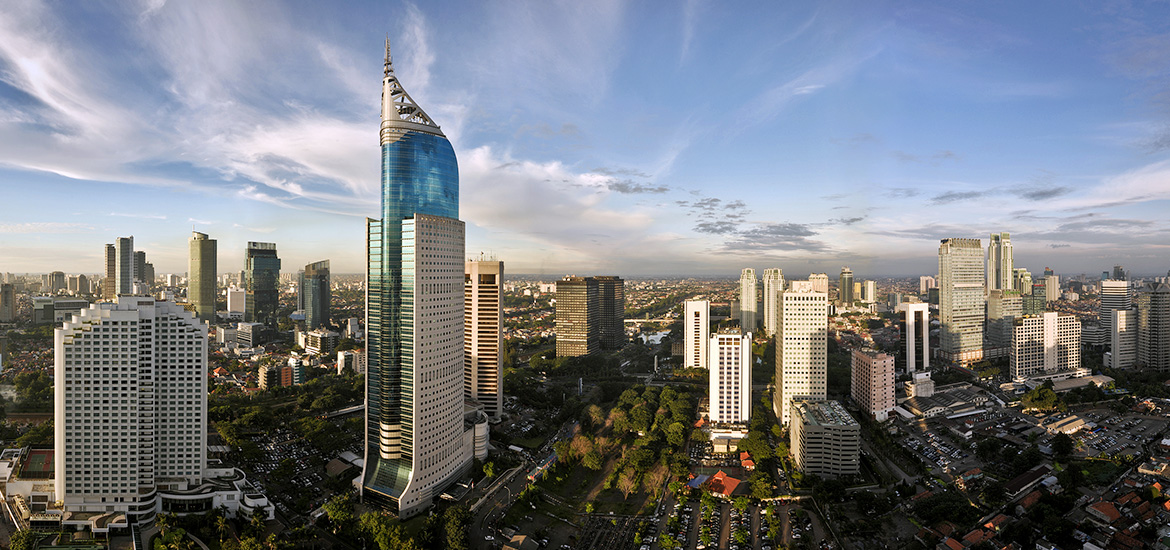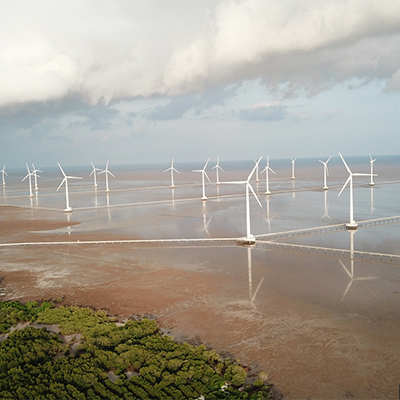This is part of “The Edges of Southeast Asia” project by Deloitte, the Singapore Economic Development Board and the US-ASEAN Business Council, which shines a light on the bright spots of creativity and innovation in the region. We take a look at emerging 'edges' or customer segments, geographic markets or products that offer high growth potential opportunities in ASEAN.
Did you know that Jakarta is the sixth-most Instagrammable city in the world, garnering almost 60 million hashtags in 2019? Or that the United Nations' list of the world's heritage treasures includes Singapore's hawker culture alongside the historic Malaysian cities of Melaka and George Town?
Across Southeast Asia, cities are growing in size and complexity as they draw in people at a staggering pace. It's been estimated that within 30 years, nearly 70 per cent of people in ASEAN will live in urban areas. Some 90 million people are expected to move to major cities in the region in the coming decade alone, further cementing a global trend towards urbanisation.
As cities become increasingly central to life in Southeast Asia, we need to make them more functional, sustainable and environmentally friendly. As their populations grow and energy demands rise, ways must be found to lessen their contribution to global carbon emissions. But as we make progress on all these fronts, we must also maintain or create the conditions that make cities enjoyable places to live in.
It is the intangible social, cultural, historical and sometimes downright gritty aspects of cities that make them truly lovable places in which to live, work and play.
There are good reasons why cities are growing. Their very density provides exceptional economic, educational, social and health opportunities. They also promote innovation, as people literally bump into one another and share ideas.
However, cities also present challenges. Without the right planning, they can become congested, polluted, unaffordable and dangerous.
They also play a big role in climate change. It has been estimated that cities' share of global energy emissions will rise from 71 per cent in 2006 to 76 per cent in 2030. In China, the energy used to power urban areas already accounts for 85 per cent of total carbon emissions.
So, how do we maximise the benefits that cities have to offer and minimise the downsides?
Making cities functional
The first step is to ensure our cities work - that they are well designed for convenience and safety, and provide access to employment, affordable housing and healthcare. This is critical because more than 80 per cent of the world's gross domestic product is generated in cities.
On this front, Southeast Asia is leading the world with smart city projects that are pioneering new models of urban planning and technological integration. Examples include the Punggol Digital District in Singapore, Bumi Serpong Damai and Makassar in Indonesia, Phuket in Thailand, and the smart city extension to Hanoi in Vietnam.
Making cities sustainable
There has been extensive discussion about whether COVID-19 will lead to long-term change in cities. Will we move away from living in high-rise apartments and working in office towers, where we are too exposed to other people and contagion? And instead move towards living and working from home in more suburban areas?
Time will tell, but that path seems less likely in Southeast Asia than in countries - such as Australia and the United States - that have significant suburban and rural areas for people to move to.
Instead, it seems that COVID-19 has given many people in Southeast Asia a greater awareness of and appreciation for their local communities, which are often within cities. There have been many instances of communities coming together to help and support one another in times of crisis. And travel restrictions mean that people are exploring where they live and discovering new facets of their city.
It has also made us more aware of health and has us all thinking about the factors that contribute to the well-being of those who live in teeming urban settings. This awareness and the discussions that have arisen have in turn highlighted the value of the many sustainable city initiatives that have been put in place across the region.
Bangkok, for example, has created the Chulalongkorn University Centenary Park to help manage floods and create a green space for residents to enjoy. The Philippines closed the resort island of Boracay for six months in 2018 to rehabilitate it from the damage caused by over-tourism and development. There will also be 45 billion fewer single-use plastic bags a year in Thailand after the government banned them last year.
In other encouraging trends, we are seeing the emergence of start-ups with fresh ideas for making our cities more sustainable. For example, Singapore's ecoSPIRITS is reducing carbon and waste in the spirits industry, and Indonesia's Avani Eco is cutting plastic waste by making eco-friendly food packaging and other products.
All these activities are vital if we are to make Southeast Asian cities liveable, healthy and environmentally sustainable. The sheer scale and growth of these cities mean that the battle to address global climate change really will be won or lost in the region.
Making cities with heart and soul
Finally, we need to ensure our cities have heart and soul. Cities need to maintain or develop the character that makes them engaging. This will come from focusing on the more intangible and cultural aspects of our centres.
There are many ways to do this. The first is to ask citizens what they value about their cities and cultures, as Singapore is doing with its Loveable Singapore Project, and then foster those attributes. An outcome from the project is the knowledge that people value spaces that are authentic, inclusive and support their ability to interact with loved ones.
To make cities equitable and diverse, the authorities must strive to establish policies and infrastructure that are truly inclusive for all. This could include making transport accessible to people with disabilities, delivering suitable services for older citizens or creating equal employment and advancement opportunities for women and men.
Cities should also consider whether innovations, such as new online portals for accessing public services, are accessible to everyone and easy to use. That might mean using digital technology and artificial intelligence to cater for ASEAN's wide range of languages.
Another powerful mechanism is for citizens to have a sense of ownership over their cities. The more people value their cities and feel a sense of agency over their future, the more they will nurture them.
One way to build this sense of ownership is to create open data sets that enable governments and citizens to share information about cities and work together to improve outcomes.
In Singapore, for instance, the Land Transport Authority has opened up about 100 data sets. This has enabled the development of more than 40 apps and services that citizens can use to get live traffic updates, book taxis, locate parking spots and find out when the next bus will arrive.
Some ASEAN countries have also joined the global Open Government Partnership, which is focused on making government more transparent and inclusive. This includes the Philippines, which was among the first governments to join and is implementing 14 commitments, including creating an open data portal to combat corruption.
Another obvious step is to cherish cities' arts, cultural and heritage institutions and sites. These include everything from concert venues to art galleries to museums. Moreover, cities should ensure that these facilities are as relevant, accessible and interesting to local residents as they are to tourists and other visitors.
Perhaps counter-intuitively, cities should also seek to maintain their unique aesthetics. This might mean maintaining older, rundown areas that remain interesting and "gritty" even as many areas are transformed with new apartment complexes, modern malls and gleaming granite and glass office buildings.
A glance through the varied images of Jakarta on Instagram - from the city's monuments to its busy streets, local faces and graffiti - provides a great insight into what people believe makes a city interesting and appealing.
Working together
Creating cities that are functional and sustainable, and have heart and soul, will require a significant and collective effort from governments, businesses and individuals. Since most of us will live or work in cities, creating liveable and vibrant places is in everyone's best interest.
Given the enormous technological and social progress of recent years, there is no reason why our cities can't be places where innovation is high, pollution is low, health and well-being are reinforced, people can walk or cycle to high-value jobs, and rich local character flourishes. With vision and collaboration, we can work together to achieve it.
Cindy Hook is chief executive officer of Deloitte Asia-Pacific.
This article was first published on The Straits Times, and is reproduced with the author's permission.







